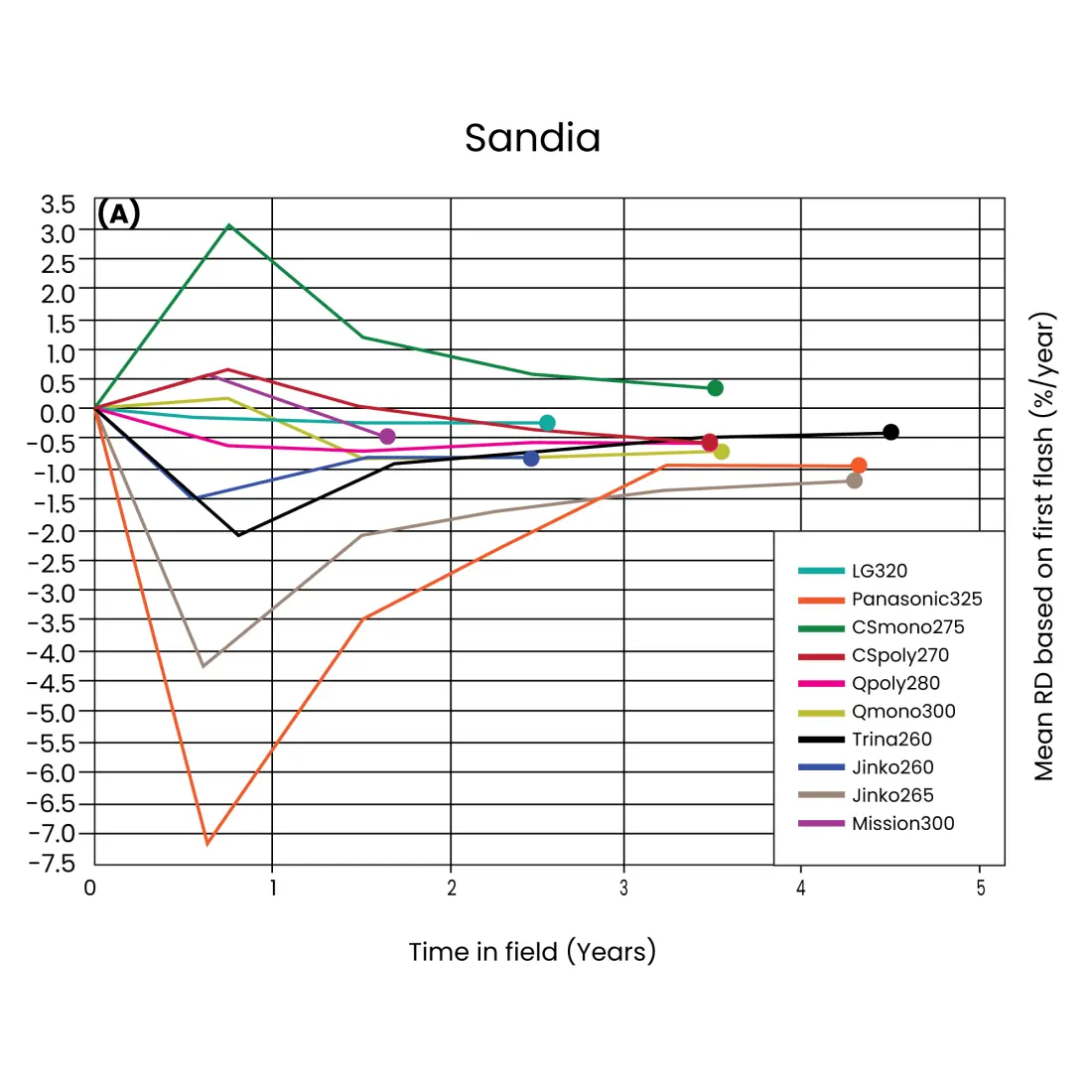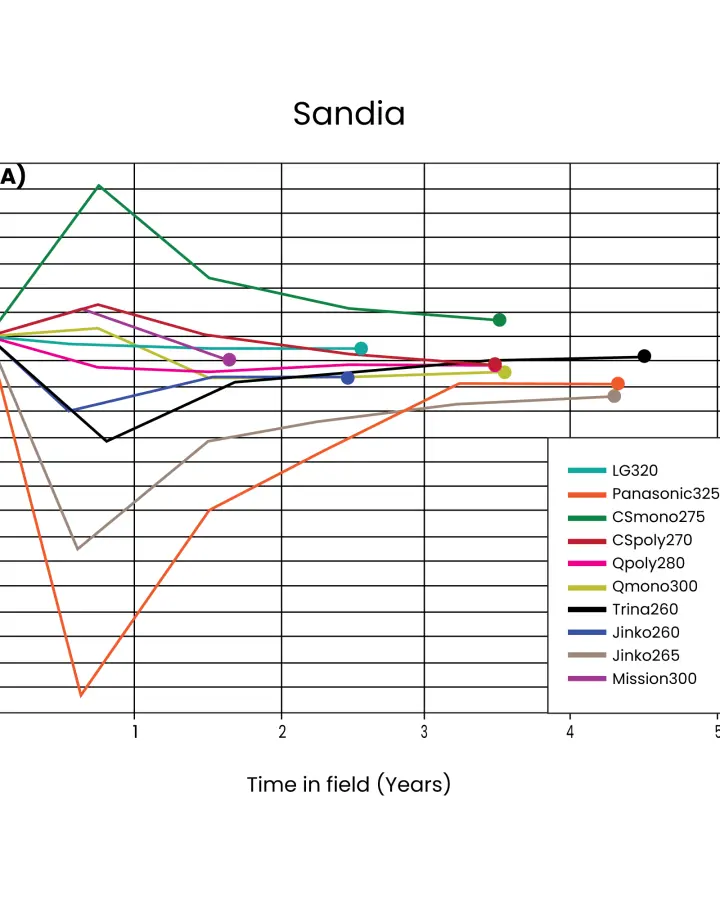Most solar modules retain 80% productivity after 3 decades


Sandia National Laboratories (SNL) has recently finished a five-year solar module degradation study. SNL purchased over 834 modules representing 13 different technologies from 7 manufacturers. They placed them in the three different locations of the field, each representing a different range of climate. The test has also examined the initial power stabilization and degradation rates.
SNL is one of three National Nuclear Security Administration research and development laboratories. Its primary goal is to develop, engineer and test non-nuclear parts of nuclear components and other high technology.
The results
The research showed that 56 percent of the studied systems could produce above 80 percent of electricity at its beginning-of-life stage after 30 years of usage, while 26 percent proved to exceed their warranty limits due to their lower degradation rates.
The SNL has also revealed that lower costs of the solar modules can increase the degradation rate due to cheaper design and materials used in the future. However, the sharp decrease in solar module costs has made solar energy the central part of today’s energy industry.
Nameplate power rating differences ranged from 3.6 percent to 4 percent with initial power stabilization varying from 3.3 percent to +0.6 percent. Flash-over-flash measurements’ performance varied depending on the seasons. Moreover, the module power loss for higher efficiency technologies was driven by Voc degradation. The research also showed that bill of materials also has a significant role in performance even though modules come from the same vendor.

The degradation also depends on various time and seasonal variation in some module types. However, the degradation rates displayed in the research are not that different from the ones measured in the past for more expensive PV modules. Module degradation rates haven't been affected by the price drops for the samples investigated in this study. This is a very promising result.
Conclusion
Such outcomes prove the longevity of solar energy plants and illustrate the fact that they can serve as a reliable source of energy in a long term perspective. The major challenge remains of balancing the dropping prices with quality and ensuring the most sustainable option for future solar fields.